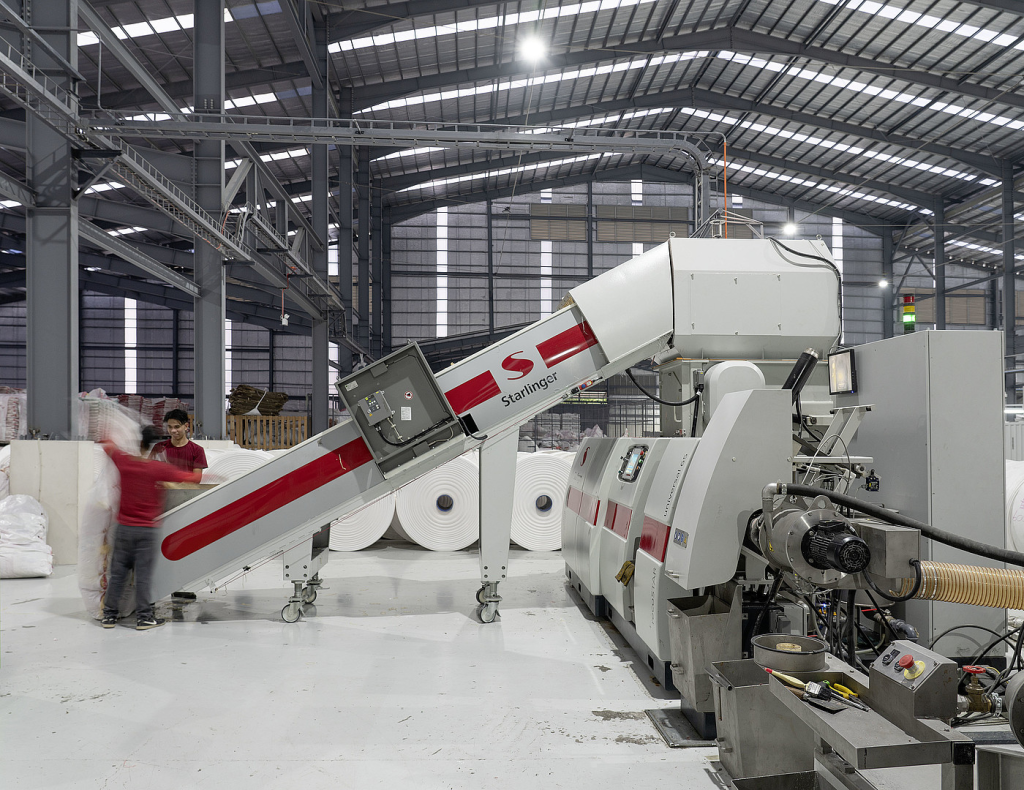
“The future of packaging in China isn’t just about functionality—it’s about aligning with national sustainability goals and consumer demand for ethical production,” remarked a leading industry analyst during a recent roundtable on circular economy trends. This sentiment encapsulates the transformative shift driving China’s multiwall paper bag market, where companies like VidePak are positioning themselves as pioneers through ESG-aligned innovation and scalable production capabilities.
1. Market Overview: The Rise of Multiwall Paper Bags in China
China’s packaging industry, valued at over $180 billion in 2024, is undergoing a seismic shift toward sustainable alternatives. Multiwall paper bags, known for their durability and recyclability, are gaining traction as replacements for single-use plastics, particularly in sectors like agriculture, construction, and food storage. According to the China Packaging Federation, demand for eco-friendly multiwall paper bags is projected to grow at a CAGR of 8.2% from 2023 to 2030, driven by stringent environmental policies and consumer awareness.
Key Drivers:
- Regulatory Pressures: China’s “Double Carbon” policy mandates a 30% reduction in plastic waste by 2025, incentivizing businesses to adopt paper-based solutions.
- Consumer Preferences: A 2024 Nielsen survey revealed that 68% of Chinese consumers prioritize brands with transparent sustainability practices.
- Export Requirements: Global buyers, particularly in Europe, increasingly demand ESG-compliant packaging for cross-border trade.
2. ESG Reporting: A Strategic Imperative for VidePak
Environmental, Social, and Governance (ESG) reporting has emerged as a cornerstone for businesses operating in China. For VidePak, ESG isn’t a checkbox—it’s embedded in their operational DNA.
Environmental Commitment
VidePak’s 2 MW rooftop solar system powers 40% of its production facilities, reducing annual carbon emissions by 1,200 tons. The company uses 100% recyclable polypropylene (PP) and biodegradable laminates, aligning with China’s Circular Economy Promotion Law. Notably, their adoption of Starlinger extrusion lines ensures minimal material waste—a critical factor in achieving zero-landfill targets by 2027.
Social Responsibility
Beyond production, VidePak invests in community welfare. Since 2020, the company has funded education programs for over 500 children of migrant workers in rural Sichuan and Yunnan, addressing systemic labor inequities. This initiative not only enhances employee loyalty but also resonates with China’s rural revitalization strategy.
Governance Excellence
The implementation of 5S management (Sort, Set, Shine, Standardize, Sustain) has reduced workplace accidents by 45% since 2021. Automated quality control systems, integrated with AI-driven defect detection, ensure 99.8% product consistency—a benchmark highlighted in the Global Packaging Standards Report.
3. VidePak’s Competitive Edge: Technology and Scalability
Founded in 2008 and led by Ray Chen, VidePak combines three decades of industry expertise with cutting-edge technology.
Production Capacity:
| Equipment | Quantity | Function |
|---|---|---|
| Circular Looms | 100+ | High-speed weaving for uniform fabric |
| Extrusion Lines | 16 | Seamless PP film production |
| Lamination Machines | 30+ | Multi-layer bonding for enhanced strength |
| Digital Printing Presses | 12 | Custom designs with <0.1mm precision |
This infrastructure supports an annual output of 120 million bags, catering to clients like Cargill and LafargeHolcim. The company’s BOPP laminated woven bags, for instance, offer UV resistance and moisture barriers, ideal for Southeast Asia’s humid climates.
4. Innovation in Action: Case Studies
Case 1: Solar-Powered Circular Economy
By integrating solar energy with Starlinger’s iQ³ technology, VidePak reduced energy costs by 25% while maintaining ISO 14001 certification. A partnership with a Jiangsu-based cement producer replaced 10 million plastic bags annually with multiwall paper alternatives, cutting the client’s carbon footprint by 15%.
Case 2: Customization for Global Markets
A European organic food retailer required compostable bags with customized venting patterns. VidePak’s R&D team developed a kraft paper composite with micro-perforations, achieving a 30% faster decomposition rate than industry standards.
5. Challenges and Strategic Responses
Challenge 1: Raw Material Volatility
PP resin prices fluctuated by 18% in 2023 due to geopolitical tensions. VidePak mitigated this by diversifying suppliers and investing in recycled PP feedstock, which now constitutes 30% of raw material intake.
Challenge 2: Regulatory Complexity
China’s evolving GB/T 18455-2023 standards for recyclability necessitated rapid adjustments. VidePak’s collaboration with the China National Light Industry Council ensured compliance ahead of deadlines.
FAQs: Addressing Key Queries
Q: How does VidePak ensure product durability?
A: Multiwall bags undergo burst strength tests (≥80 kPa) and MIT folding endurance trials (≥3,000 cycles), exceeding ASTM D4632 benchmarks.
Q: Are custom printing options scalable?
A: Yes. VidePak’s 12-color rotary printers support runs from 5,000 to 5 million units without compromising lead times.
Q: What certifications validate ESG claims?
A: VidePak holds ISO 9001 (Quality), ISO 14001 (Environmental), and SA8000 (Social Accountability) certifications.
6. The Road Ahead: Opportunities in a Green Economy
The convergence of policy, technology, and consumer demand positions multiwall paper bags as a linchpin in China’s sustainable packaging revolution. For VidePak, leveraging platforms like Made-in-China.com to showcase multiwall paper bags and Starlinger equipment will be pivotal in capturing emerging markets in Africa and ASEAN nations.
As Ray Chen notes, “Our mission isn’t just to make bags—it’s to redefine packaging as a force for environmental and social good.” With 800+ global clients and $80 million in annual revenue, VidePak exemplifies how ESG-driven innovation can fuel growth in China’s dynamic market.
This report synthesizes insights from industry reports, regulatory documents, and VidePak’s operational data to provide a comprehensive outlook on the multiwall paper bag sector. For further details on customized solutions, visit the company’s profile on Global Packaging Insights or Sustainable Manufacturing Weekly.